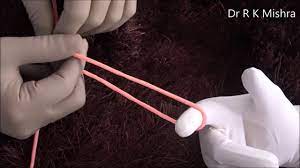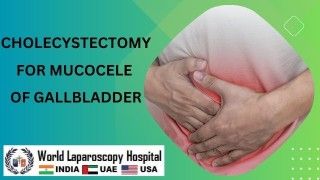Diagnosis of intestinal endometriosis by laparoscopic surgery
Add to
Share
206 views
Report
1 month ago
Description
Intestinal endometriosis is a rare but significant manifestation of endometriosis, affecting the bowel wall and leading to symptoms that often mimic other gastrointestinal disorders. Because its presentation is frequently nonspecific and imaging tests may not always provide definitive results, laparoscopic surgery remains the gold standard for diagnosis and management. Understanding Intestinal Endometriosis Endometriosis is characterized by the presence of endometrial tissue outside the uterus. When this ectopic tissue infiltrates the intestinal wall—most commonly the rectosigmoid colon—it is referred to as intestinal or bowel endometriosis. The depth of invasion varies, ranging from superficial peritoneal implants to deep infiltrating lesions involving the muscularis propria or even the mucosa. Common Symptoms Chronic pelvic pain Painful bowel movements (dyschezia) Cyclical rectal bleeding (rare) Constipation, diarrhea, or alternating bowel habits Abdominal bloating and cramping Symptoms overlapping with irritable bowel syndrome (IBS) or inflammatory bowel disease (IBD) Limitations of Conventional Diagnostic Methods Ultrasound and MRI: While useful in identifying pelvic endometriotic nodules, their sensitivity is reduced in detecting small or deeply infiltrating intestinal lesions. Colonoscopy: Often appears normal, as endometriosis typically involves the outer layers of the bowel wall rather than the mucosa. CT Scan: Non-specific and not routinely recommended. Due to these challenges, many patients experience diagnostic delays, sometimes for several years. Role of Laparoscopic Surgery in Diagnosis Laparoscopy is the definitive diagnostic tool for intestinal endometriosis. It allows direct visualization of the abdominal and pelvic cavity, enabling surgeons to: Identify Lesions: Endometriotic implants on the peritoneum, ovaries, and bowel can be directly inspected. Lesions often appear as bluish, reddish, or whitish nodules, adhesions, or thickened bowel segments. Assess Extent of Disease: The exact size, location, and depth of bowel infiltration can be determined. This is crucial for planning appropriate surgical management. Perform Biopsy: Histopathological confirmation through laparoscopically guided biopsy provides the final diagnosis, distinguishing endometriosis from malignancy or other inflammatory conditions. Differentiate from Other Disorders: Conditions like Crohn’s disease, diverticulitis, or colorectal cancer can mimic intestinal endometriosis; laparoscopy helps in accurate differentiation. Advantages of Laparoscopic Diagnosis Minimally invasive approach with quicker recovery compared to open surgery High accuracy in identifying peritoneal and deep infiltrating lesions Therapeutic potential, since diagnostic laparoscopy can be combined with excision or shaving of lesions, adhesiolysis, or bowel segment resection if required Improved fertility outcomes, as endometriosis treatment may restore reproductive function in affected women Conclusion The diagnosis of intestinal endometriosis poses a significant clinical challenge due to its nonspecific symptoms and limitations of noninvasive imaging. Laparoscopic surgery stands as the gold standard for both diagnosis and treatment, offering direct visualization, histological confirmation, and simultaneous therapeutic intervention. Early use of laparoscopy in suspected cases can reduce diagnostic delays, alleviate symptoms, and improve quality of life for women suffering from this condition.
Similar Videos






